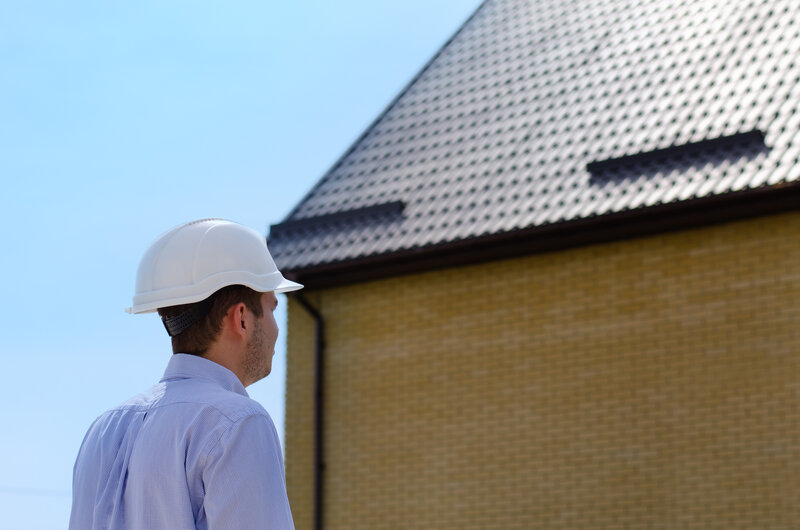-

When was the last time you scheduled a roof inspection? If you’re like many Bay Area homeowners, the answer may be “never” or “so long ago you don’t remember.” Nevertheless, annual roof inspections are a key part of whole-home maintenance and help to optimize your roof’s function and life expectancy.
Scheduling professional roof inspections can save you thousands of dollars over the course of a couple of decades.
5 Signs It’s Time To Schedule A Roofing Professional To Inspect Your Roof
If you cannot safely perform a roof inspection of your own (always the case with steeply pitched roofs or multi-story homes), then roof inspections should be scheduled annually. The sooner you repair red flags, clear out clogged gutters, or replace missing/damaged shingles or tiles, the less likely the roof will leak and the longer the roof will last. Plus, proof you’re following the roofing manufacturer’s instructions regarding roof inspections and maintenance goes a long way if you need to file a homeowner’s insurance claim.
However, even outside annual inspections, there are five signs you need to call a roofing professional to inspect your roof.
You notice damaged or missing roofing materials
While a full roof inspection requires physically walking the entirety of the roof and investigating all of the different roofing materials, some things can be seen from the ground. For example, if you see evidence of cracked, missing, or loose shingles or tiles, your roof needs attention. These materials must be replaced immediately for your roof to continue performing as designed.
Also, it’s worth looking into if you notice discoloration between different asphalt shingles. That’s especially true if you haven’t replaced or repaired your roof in many years. The discoloration is typically a sign of wear or that shingles are missing altogether.
A peeling or well-worn roofline
As long as you’re performing a DIY roof inspection from the ground, take a close look at the roofline, eaves, etc. Do you see evidence of peeling paint? Cracking? What about warping or other obvious signs of weathering or wear? In most cases, those are sure signs of an older roof that needs repair, renovation, or replacement.
Evidence of wear and tear or the breakdown of the roofline also signifies moisture issues are causing harm to roof underlayments, and there is probably worse damage in areas you can’t see from a ground-level inspection or without looking deeper into the roof layers.
Discolored drywall in your home
Any discolored drywall, especially those circular in shape, almost always signifies moisture damage at some level. If the discolorations appear on the interior side of your exterior walls, anywhere near the roofline, or in a ceiling between the attic and the living space, there’s a good sign you have a leak.
Some of the most common areas where roofs leak is:
- Anywhere in an outdated or poorly maintained roof
- Around flashing and valley
- Around skylights, solar tubes, or other roof penetrations
- Alongside old or clogged gutters
- Along chimney or vent penetrations
Some of these are easier to inspect on your own than others, which is where professional roof inspections take over.
There is debris, algae, mold, or other “unidentifiable” things on the roof
Any branches, accumulated leaf debris, algae, or other debris threaten the roof. If you notice debris stuck on the roof, contact a roofing professional to inspect it and remove it. Also, a rogue branch or debris that’s harboring moisture can damage and rot roofing materials.
Algae, mold, or moss may look beautiful or enchanting, but they feed off the organic materials comprising a roof. They eventually cause rot that is unable to be repaired. If you have a single-story home with a reasonably sloped roof, removing roof debris may be a DIY task. However, we advise you to wait for a dry day and follow all of the tenets of Roof Safety 101. If you feel at risk, get back to ground level and contact a licensed, trusted roofing professional.
When gutters and downspouts are overflowing it’s time for a roofing professional to inspect your roof
Cleaning and maintaining gutters and downspouts is another DIY roof maintenance chore, assuming you have the right safety protection and equipment. If the gutters and downspouts are already overflowing, it’s time to call the professionals. Depending on how long they’ve been full, your roof may already be wicking water into the structural elements of your home. We may also find that old or poorly maintained gutters need to be repaired or replaced.
Join CBR’s Preventative Maintenance Program For Regular Inspections
Did you know many local roofing companies offer preventative maintenance programs? We schedule routine inspections for a reasonable annual fee, so you don’t have to think about it. The small amount you pay to remain on our regular inspection and maintenance schedule pays for itself in terms of a high-functioning roof and savings in repairs or replacements that went too long.
Contact Central Bay Roofing, (510) 521-7334, to schedule your overdue roofing inspection and learn more about preventative maintenance tips to increase your roof’s lifetime.
When To Call A Roofing Professional To Inspect Your Roof
Call Us On (510) 521-7334
Your Local Roofers Since 1978
We invite you to contact us today for an estimate on your roofing project.
1814 Clement Avenue Alameda, CA 94501
(510) 521-7334
info@centralbayroofing.comLicense: 435272 Class B, C-39
Site powered by RooferBoost
Copyright 2017 Central Bay Roofing and Restoration | Login
